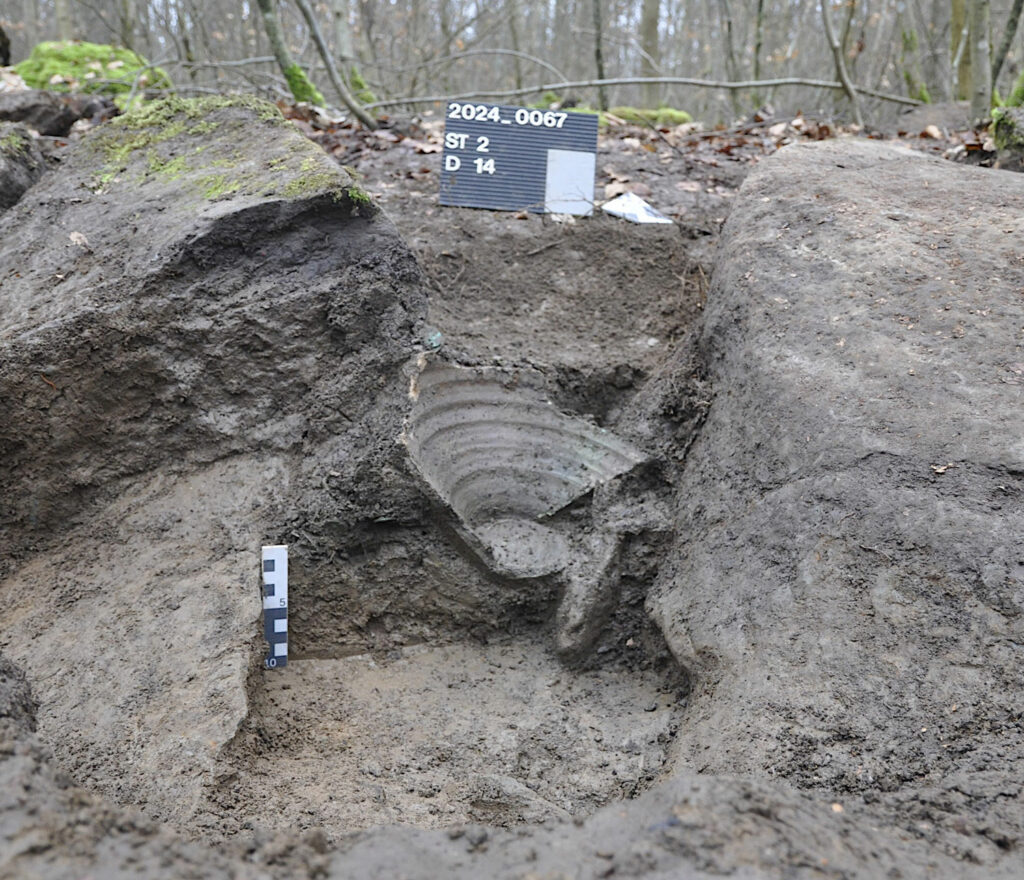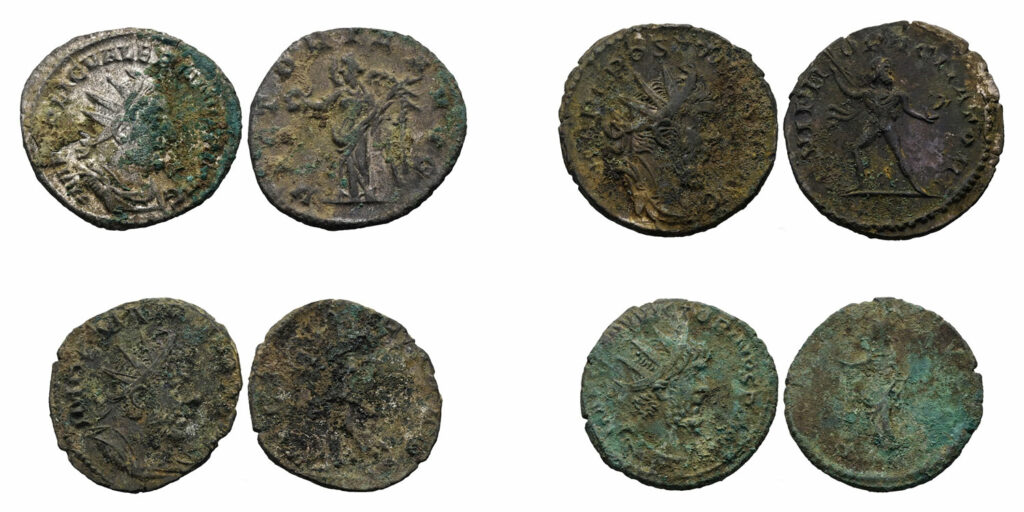
KOBLENZ, GERMANY—Live Science reports that nearly 3,000 poorly preserved coins were discovered by a metal detectorist in the Westerwald mountain range, in an area outside the borders of the Roman Empire and any known settlements of ancient Germanic tribes. The coins were unearthed by archaeologists who also recovered more than 200 unidentified thin silver fragments decorated with geometric designs from the site. The cache had been placed in a ceramic pot and hidden between two rocks. “Most of the coins are so called Antoniniani, which were the official silver coin in the Roman Empire in the third century [A.D.], but mostly consisted of bronze with a thin silver overlay,” explained Timo Lang of the Office of State Archaeology in Rhineland-Palatinate. It appears that most of the 100 coins identified to date depict either a Roman or Gallic emperor on one side. The Gallic Empire broke away from Rome between A.D. 260 and 274 and included what are now France, Belgium, Spain, and parts of Germany and Italy. The oldest coins show Roman emperor Gordianus III, who ruled from A.D. 238 to 244. The newest bear an image of the Gallic emperor Victorinus, who ruled from A.D. 269 to 271. Some of the coins were minted in Rome, but most of them were minted in Cologne, which was part of the Gallic Empire. The hoard was probably buried in the early 270s, Lang concluded. To read about a coin of the short-lived Gallic emperor Laelianus, go to “Artifact: Roman Coin.”
